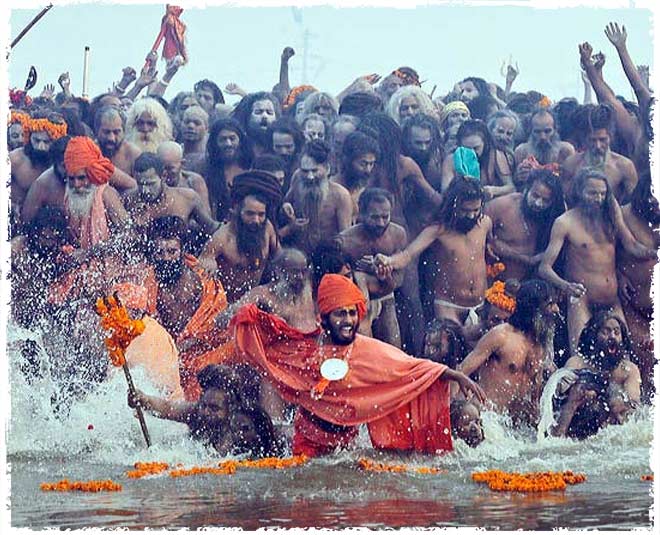While going through sacred texts I can’t but help draw a parallel between the works of Adi Shankaracharya in the Soundarya Lahari and the poetry of Bharavi in the Kiratarjuniya Mahakavya, both poets were contemporaries of each other ranging between the 6th century and 8th century. There was a flurry of activity in the world of literature and poetry at the time. Bharavi was the Pallava court poet with affluence even in the Chalukyan courts of the time. Adi Shankaracharya in comparison was an ascetic and yet both personalities dived into literature and poetry to showcase the depth of their devotion. Adi Shankara sang his poetry in the name of Kamakshi Amman of Kanchipuram while Bharavi cleverly combined the story of Arjuna and the hunter in the forest with Bhagirathi’s penance in the Descent of the Ganges, attributing his deep devotion in both stories to Lord Shiva.
The panel of Mahabalipuram describes the story of Arjuna as the hunter who fights Lord Shiva and finally gains his confidence and is blessed with the Pasupatrastra to fight the Kauravas in war. In the same breath, Bhagirathi is also potentially inscribed on the same panel worshipping Lord Shiva (shown with the ganas) seeking his intervention to break Ganga's force when she descends to earth from the heavens. While there is a lot of politics sculpted on one side on this panel, there is a narrative that shows a hunter doing chores in the forest in a sculptured comic strip. They main focus though is Shiva, the largest overwhelming being on the sculptural panel.
 |
| Kiratarjuniya Panel, Mahabalipuram |
So where is the wow factor in this elaborately carved out canvas in rock? The beauty in the panel is on display when it rains. The water collects at the top of the rocky panel (now blocked and filled with rubble!!) and flows down through the “river” carved into the rock right at the centre depicting the beautiful descent of the Ganges, reliving the poetry of the great Bharavi. The water falls into the pool below bring the large elephants back to life as they drink water from the pool. This experience is not just about viewing a panel coming to life but packed with a lot of spiritual and political meanings within the depictions of the panel. One can keep staring at the panel to just relive the moment as seen through the eyes of Bharavi.
Let's move to the poetry of Adi Shankara in the Soundarya Lahari. He describes the sensuous beauty of the Goddess through his lines and at the same time prescribes the way to higher spiritual progress through the activation of the Kundalini Shakti. In the same breath he elaborates the various swarupas on the Goddess’s face as she blesses her devotees. The experience of shanta swarupa (peace), ghora swarupa (terrific), sounmya swarupa(happy) and most importantly, the movement of her eyes in her side glance has been greatly described in Adi Shankara’s poetry. The poetry itself comes with its rhythm and mystical flavour that brings devotion and power through the sounds embedded in individual verses. Here too there is a hidden wow factor, not in the poetry itself but in the experience of its knowledge while viewing the sacred Abhishekam of the deity at the temple of Kanchi.
In the early hours of the morning, at the time of sunrise, the Goddess is given the sacred bath - Abhishekam. It is not just a sacred bath, it comes packed with an experience of pure bewilderment for the eyes to behold. And if you are well versed with the work of the great poet Shankara, you have signed up for an amazing experience of reliving the poet’s artistic work. Through a devotional experience of two hours at the temple, as the priests meticulously bathe the Goddess, she expresses her features. Pure water pouring over her form reveals her ghora rupa, the milk abhishekam reveals her shanta swarupam, and the sandalwood paste on her face reveals her Soumya swarupam. And just as we imbibe this magic of discovery, the priest takes the flame up to her face in Arti to reveal the side glance of her eyes, with a slight smile on her face.
Is it the play of light or the genius of the sculptor to make such a ravishing form and almost brings her to life when light moves over her divine face. Its not just the breath taking beauty of her form and the symbolism of her love, but the very experience that she sits there alive and breathing in front of us, giving us the grace of this wonderful experience of her side glance.
In both examples, the poets sang in praise producing great literary works and the sculptors brought their works to life in stone. Water was used as an essential ingredient to bring up the wow factor seasonally or daily in each case. And the experience was left in the hands of the viewer to imbibe and relive every time they looked at these phenomenal works of art that drove devotion, touching the emotions of the onlooker. Now this is pure user experience at play, when art, literature, mythology and lifestyle work hand in hand to bring an emotional experience embedded deep within the onlooker’s heart to life.
Photo courtesy: www.holidify.com, Remote Traveler.











